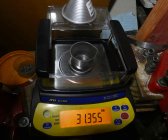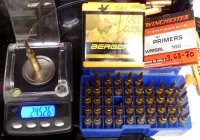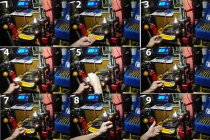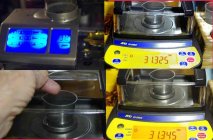I generally spend about an hour in a reloading session. Once it becomes "work" I quit. I have 100 once fired cartridges sitting in an ammo box on the bench right now. This is a likely scenario.
1. Check brass and pop out primers, usually on all 100. Place in one of those chinese take out plastic bins. They work great for sorting stuff. Quit and go enjoy life.
2. Next day, play around with annealing. Quit and go enjoy life.
3. Next day, size brass. Quit and go enjoy life.
3. Next day, trim brass, check it again, wipe off. Quit and go enjoy life.
4. Next day, complete brass prep. Seat primers. Quit and go enjoy life.
5. Next day, decide whether to load brass or put it away. One of the simple joys in life is finding a 100 rounds of prepped and primed brass on a shelf that you forgot about.
6. Next day, If I decide to load I pull out the appropriate powder and place it on the bench. No other powder in sight. Decide in my mind to load 10 rounds and quit. Pour powder charge by hand one at a time and weigh, then seat bullet, place loaded round back into ammo box which has all of the load info on a sticker, including times reloaded.
After loading 10 rounds I decide whether I feel like doing another 10. If so, I load them one at a time. If not, I pour the powder back into the bottle, quit and enjoy life.
Sometimes if I'm really in the mood I may, for example, size and trim and seat primers on all 100 cases in one session, or load 40 or 50 cartridges at a time, but those times are rare. It works for me and right now I have several hundred loaded rounds for 4 or 5 calibers sitting on the shelf. And several hundred cases prepped and primed and ready to be loaded. It's a steady almost daily routine of an hour or so in the reloading room at my pace. If I want to quit, I simply get up and leave. It will be there when I get back. I'm not going to be rushed and possibly make a stupid mistake. To me it is enjoyable (and I would say, relaxing) to "piddle around" as my wife would call it, in the reloading room for an hour or so every day or so.
I think most reloading mistakes are caused by folks getting rushed, or loading to the point of getting tired and just want to get it over with. At that point it has become work, not fun. That is easy to fix. Set a goal of only going to load or prep X rounds at a session. If you complete that, then decide whether to move forward or call it quits and go enjoy life. I learned a long time ago that if something is not fun, and there is no money to be made, I try my best not to do it.
















